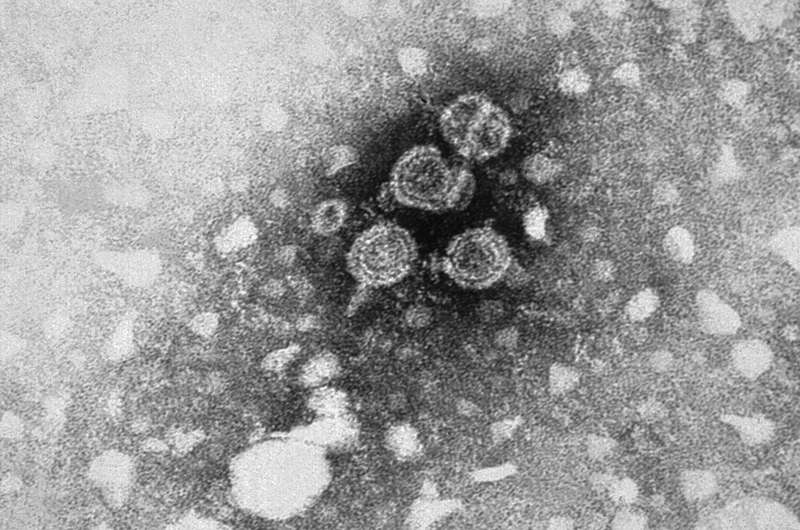A microscopic image of the Hepatitis B virus, taken by the Centers for Disease Control and Prevention
Despite an efficient and well-tolerated vaccine, hepatitis B (HBV) remains a major public health problem, with more than 250 million people at high risk of developing liver cirrhosis and cancer as a result. HBV treatment must be given for life, as it does not produce long-term disease control. A new animal study published in The FASEB Journal reveals a significant link between HBV and the metabolic pathway of bile salts that could have implications for a new therapeutic strategy for HBV treatment.
To conduct the in vitro mouse study, a research team observed a line of liver cells. Within these cells, they observed that silencing the expression of Farnesoid X Receptor (FXR) (the main receptor of bile salts that regulates bile synthesis) repressed HBV replication. They then used an FXR agonist (a small molecule mimicking bile salt) to activate the receptor and examine its effect on HBV replication. Researchers found that the virus replication was less active in mice that received the molecule than in the control mice, confirming for the first time that an FXR agonist is capable of repressing HBV.
"This is quite a new concept that extends the role of bile salts in host physiology," said Patrice André, MD, Ph.D., a professor of virology at Charles Mérieux Lyon Sud Medical School within the Université Claude Bernard Lyon 1, and a researcher at Centre international de Recherche en Infectiologie, in Lyon, France. "FXR agonists could provide a better therapeutic approach that would relieve the burden of life-long therapy for HBV patients worldwide."
The study also found that young infected mice did not respond to treatment with the agonist as adult mice did. This finding suggests a potential link between the lack of bile salt pathway maturation and a higher risk of chronic infection in newborns and young infants.
"This unanticipated link with the bile salt receptor is both fascinating as basic science, as well as offering a potential new therapeutic opportunity," said Thoru Pederson, Ph.D., Editor-in-Chief of The FASEB Journal.
Journal information: FASEB Journal





















